Key takeaways:
- Continuous Delivery fosters rapid innovation and a responsive development environment, allowing teams to deploy updates frequently and efficiently.
- Automation of testing and deployment is crucial for reducing human error and ensuring consistent quality in releases.
- Collaboration and feedback loops among team members enhance code quality, productivity, and team morale.
- Overcoming challenges such as technical debt and resistance to change is essential for a successful transition to Continuous Delivery practices.
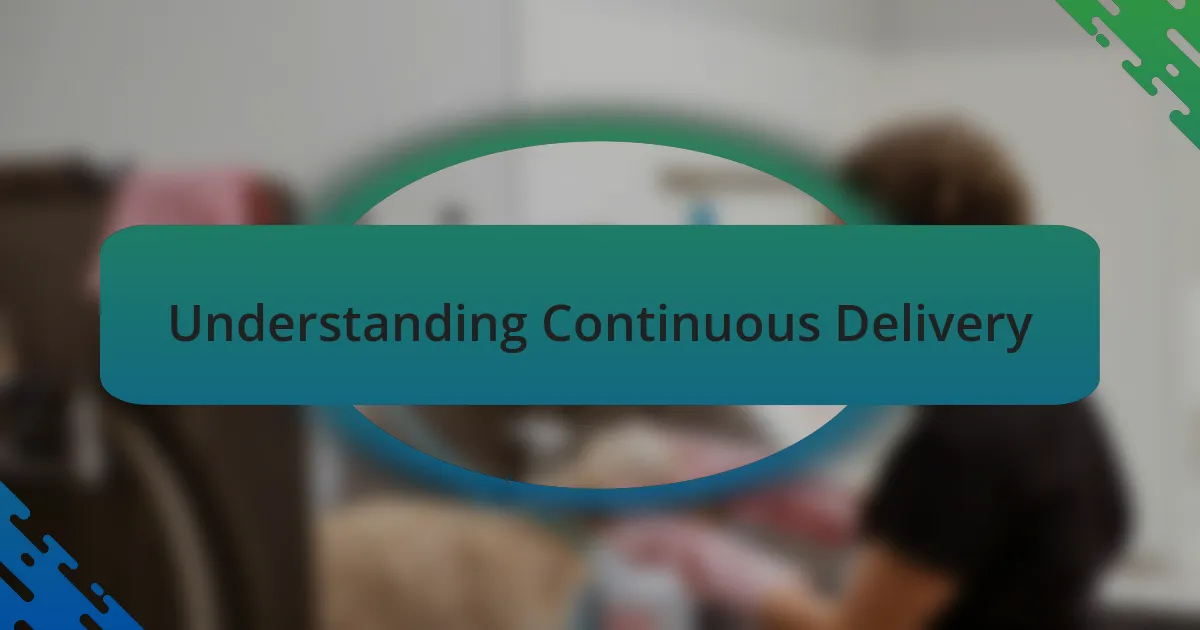
Understanding Continuous Delivery
Continuous Delivery (CD) is more than just a process; it represents a cultural shift in how teams approach software development. I remember my first exposure to CD during a project where we could deploy updates multiple times a day. The excitement in our team was palpable. We felt empowered to innovate rapidly without the anxiety of large, infrequent releases. Isn’t it liberating to know that your latest feature is just a commit away from being live?
What struck me most about Continuous Delivery is its commitment to automation. By automating testing and deployment, we not only reduced human error but also built a reliable, predictable release cycle. I often looked at our integration pipeline and felt a sense of pride — seeing code pass through various stages of checks meant we were masters of our own schedule. Do you remember the last time you had to manually deploy something? I do, and it was a nightmare compared to the streamlined process we enjoy today.
Furthermore, CD fosters a culture of collaboration and feedback. I recall one instance where we rapidly iterated on a new user interface based on user feedback that we gathered after each deployment. It was incredible to witness how our small, incremental changes made a significant impact. Can you see how Continuous Delivery can create a more responsive development environment? The swift delivery of features aligns our work closely with user needs, ultimately enhancing satisfaction on both sides.
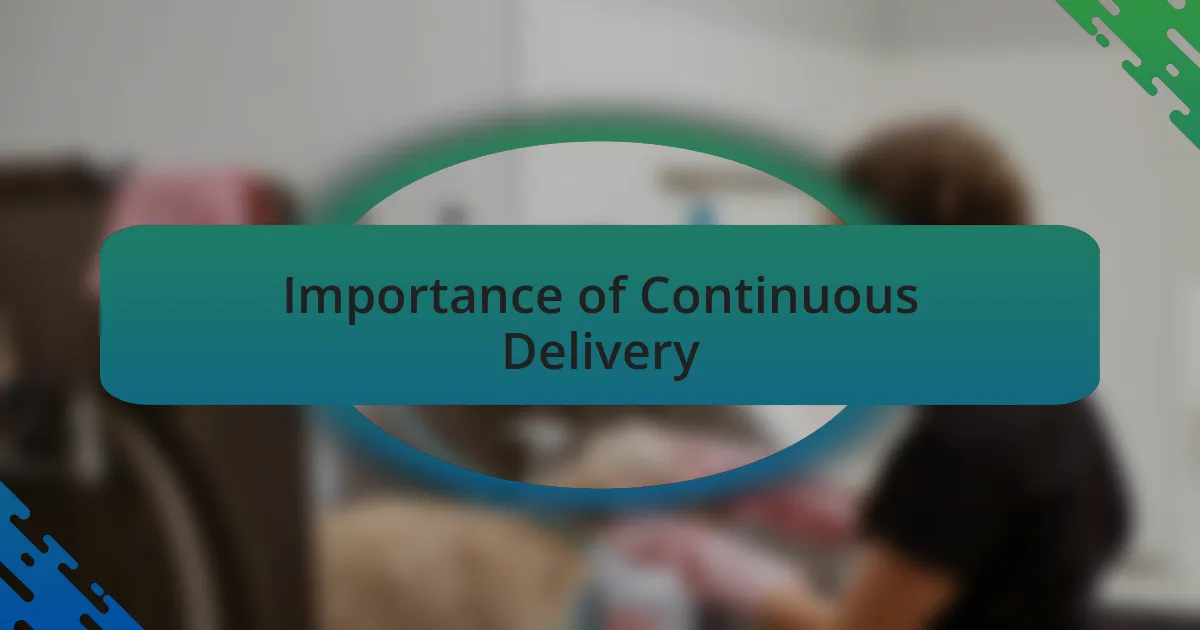
Importance of Continuous Delivery
The importance of Continuous Delivery is evident in its ability to drastically shorten feedback loops between developers and users. I recall a time when we pushed an update that fixed a critical bug within hours instead of weeks. That adrenaline rush of troubleshooting and resolving a user issue in real-time is something I will never forget. How often do you face the frustration of a lingering problem? Continuous Delivery transforms that experience into a swift resolution, making us feel directly connected to our users.
Additionally, having a dependable release process bolsters team morale. In one of my past projects, after adopting Continuous Delivery, our team celebrated each successful deployment as a small victory. The atmosphere was electric, filled with a sense of accomplishment and shared purpose. Do you think this kind of environment can promote productivity and creativity? From my perspective, it definitely can. The thrill of delivering to production frequently instills a sense of ownership in each team member, which is a catalyst for better performance.
Finally, Continuous Delivery enhances overall quality. As I’ve noticed throughout my career, testing at every stage of the pipeline not only catches issues early but also breeds confidence in our releases. I remember feeling a sense of relief knowing that our last deployment had gone through rigorous automated tests. It shifted my mindset from worrying about what could go wrong to anticipating what new features we could explore next. Isn’t it reassuring to work within a framework that safeguards quality while also enabling innovation?
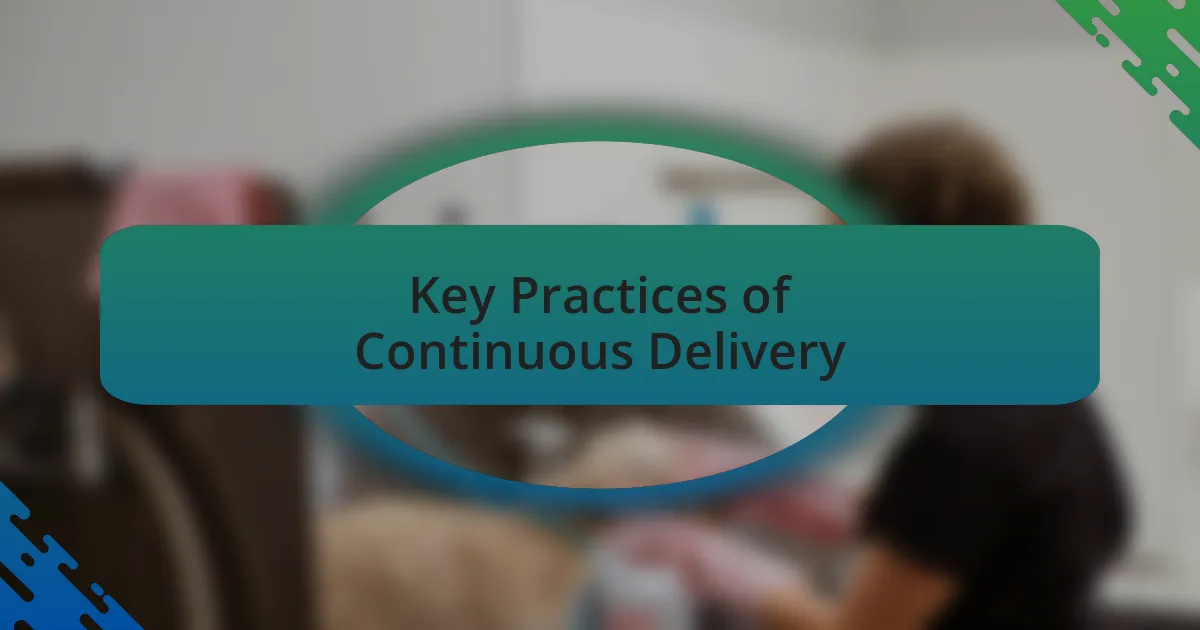
Key Practices of Continuous Delivery
Key Practices of Continuous Delivery
One of the foundational practices of Continuous Delivery is automated testing. Early in my career, I was hesitant to rely completely on automation, fearing it might miss critical issues. However, as we began to embrace automated test suites, I was astounded by how much faster we could identify bugs. It was a turning point; suddenly, we could push updates with confidence, knowing our core functionalities were continuously vetted. Have you ever experienced the relief of eliminating guesswork from releases?
Another essential practice is maintaining a consistent deployment pipeline. I vividly remember when our team set up a standardized process that our code had to go through before reaching production. It was almost like an assembly line for software; every commit went through build, test, and deploy stages. This structure not only increased our release cadence but also assured us that nothing would slip through the cracks unnoticed. How do your current workflows measure up in terms of consistency?
Lastly, fostering a culture of collaboration is crucial. I found that some of our most significant breakthroughs happened during cross-team code reviews. When different perspectives came together, it often led to unforeseen improvements and refinements. This collective ownership and shared learning experience not only enhanced our code quality but also deepened our team relationships. Isn’t it fascinating how collaboration can lead to superior results while simultaneously nurturing a supportive work environment?
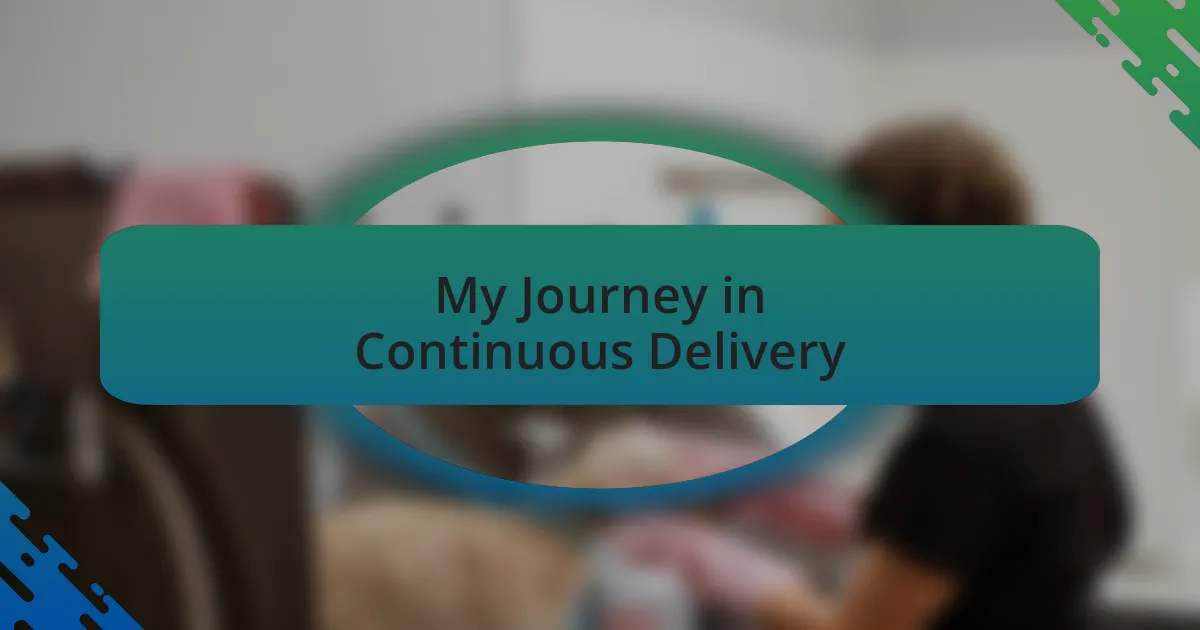
My Journey in Continuous Delivery
My journey in Continuous Delivery has been nothing short of transformative. I recall the first time we deployed a feature using our Continuous Delivery pipeline; the exhilaration in the room was palpable. I had never felt so connected to my work, knowing that the deployment process not only facilitated speed but also maintained our overall software quality. Have you ever tasted the excitement of watching your code seamlessly go live?
As we delved deeper into Continuous Delivery, I encountered challenges that forced me to rethink my assumptions. There was a particular instance when our automated tests failed right before a scheduled release, and I felt a wave of panic sweep over me. Yet, this moment became a lesson in resilience and adaptability. Instead of feeling defeated, we rallied together as a team, quickly diagnosing the issue and implementing a fix. How often do we find ourselves growing the most through these unexpected hurdles?
Reflecting on my evolution within Continuous Delivery, I’ve come to appreciate the importance of feedback loops. One memorable project involved weekly retrospectives, where I learned that our team needed to embrace failure as part of our growth. By fostering an environment where we could openly discuss obstacles, we turned setbacks into stepping stones. Isn’t it empowering to know that our missteps can lead to greater mastery and understanding?
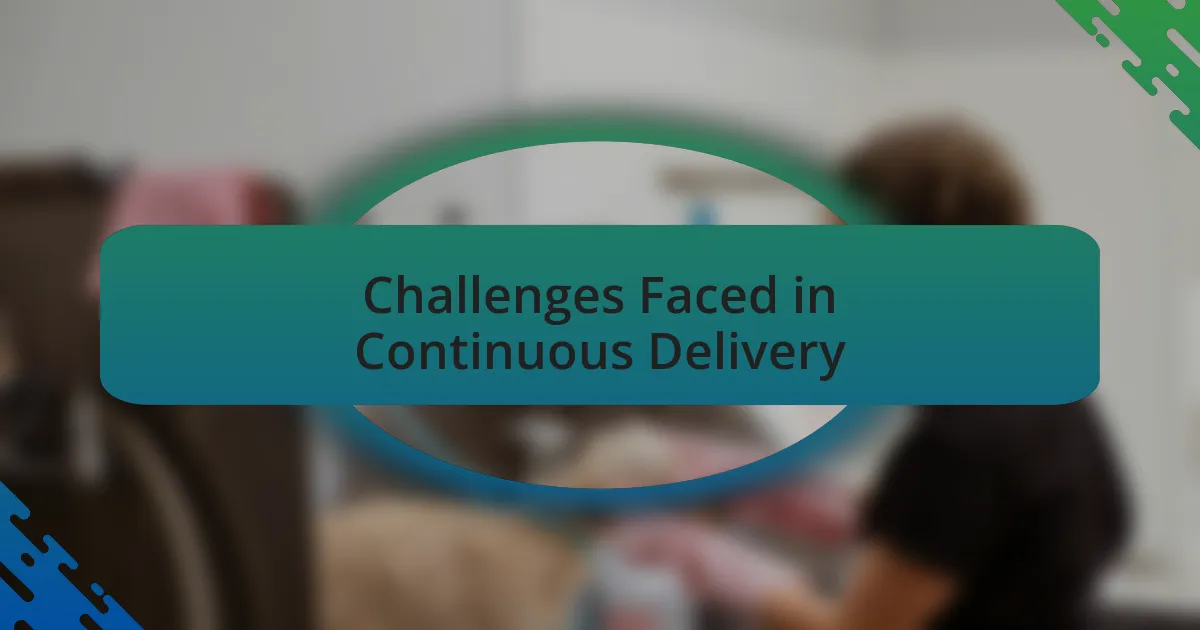
Challenges Faced in Continuous Delivery
One significant challenge I faced in Continuous Delivery was coordinating between cross-functional teams. I vividly recall trying to manage the expectations of the development team while ensuring that the operations team was aligned with our release schedule. The tension in those discussions often felt like walking a tightrope. How do we ensure everyone stays on the same page when priorities differ? Ultimately, I learned that fostering transparency through regular updates and open dialogues significantly eased those tensions.
Another hurdle was dealing with technical debt. In one project, we prioritized delivering features over addressing existing bugs. It wasn’t until we faced deployment issues due to that accumulated debt that I realized the long-term impact of our decisions. It made me wonder, how often do we sacrifice quality for speed without considering the consequences? From that experience, I understood the importance of balancing feature delivery with maintaining code integrity; it’s essential for sustainable progress.
Lastly, I grappled with resistance to change within the team. There were moments when some team members were hesitant to adopt our new Continuous Delivery practices, clinging to familiar workflows. I remember a heated discussion with a colleague who was skeptical about switching from manual testing to automation. This resistance challenged my patience but also pushed me to better understand my teammates’ concerns. How can we ease the transition for everyone involved? It took time, but by involving them in the process, we turned skepticism into acceptance, ultimately fostering a culture of innovation that benefited us all.
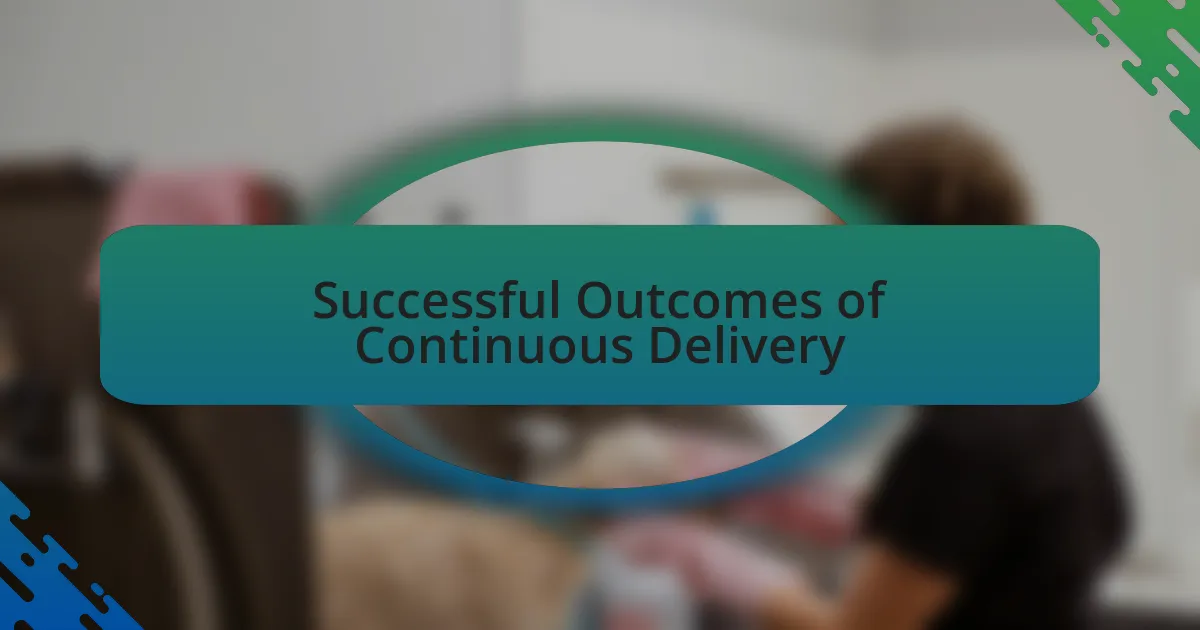
Successful Outcomes of Continuous Delivery
Successful Outcomes of Continuous Delivery
One of the most rewarding outcomes I experienced with Continuous Delivery was the remarkable improvement in deployment frequency. I remember one release cycle where we managed to push updates to production every week, instead of the previous every few months. It was exhilarating to see our work come to life so quickly and to receive immediate feedback from users. How often do we get the chance to iterate and refine based on real-world usage?
Another significant benefit was the enhancement of product quality. Prior to embracing Continuous Delivery, we often encountered major issues post-deployment, leading to frantic late-night fixes. After refining our processes, I witnessed a remarkable decrease in the number of critical bugs reaching production. The satisfaction of knowing that the team had tackled potential pitfalls before they escalated was a game changer. Isn’t it fulfilling when hard work reflects in the smooth experience users have?
Besides improved velocity and quality, the cultural shift within my team stood out as a profound outcome. By embedding Continuous Delivery into our daily practices, we cultivated a mindset of ownership and accountability. I recall a moment when a junior developer took the initiative to propose automated tests for a feature. That spark of innovation from someone new to the team reminded me how empowering it is to foster an environment where everyone feels their contributions can make a difference. Isn’t it inspiring when a team truly thrives on collaboration?
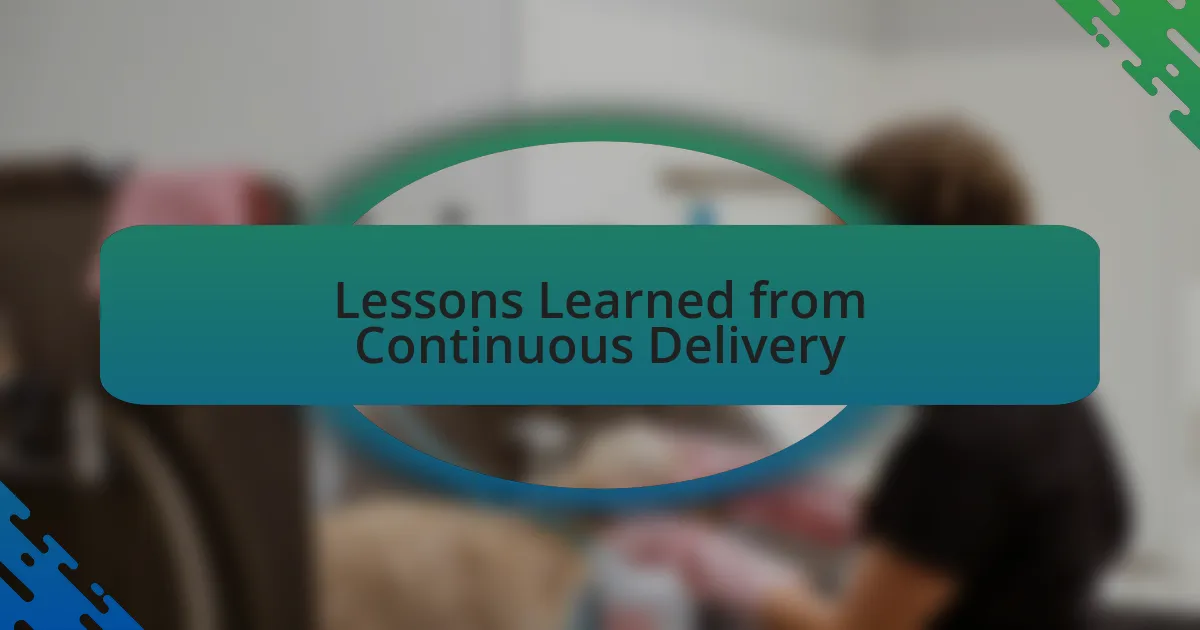
Lessons Learned from Continuous Delivery
Embracing Continuous Delivery taught me the importance of early feedback loops. During one project, I vividly remember presenting a feature that seemed solid during development, but user testing unveiled areas for improvement I hadn’t considered. It was a humbling moment that underscored how vital it is to include users in the conversation early—and often. Have you ever missed the mark only to find clarity through others’ perspectives?
Another lesson that resonated deeply was the value of automated testing. Initially, I was skeptical about investing time in writing tests, but that changed when a single line of code, untested, broke a critical function just before a launch. The chaos that ensued made me realize that automation isn’t just a help; it’s a necessity. It’s fascinating how the right processes can transform anxiety into confidence, don’t you think?
Finally, my journey through Continuous Delivery illuminated the necessity of effective communication within the team. I recall a period when we implemented daily stand-ups to discuss our progress. This small adjustment in our routine not only kept everyone aligned but also fostered a sense of camaraderie. It made me appreciate the simple yet profound effect of transparent communication—how could we enhance our collaboration if we didn’t share our struggles?